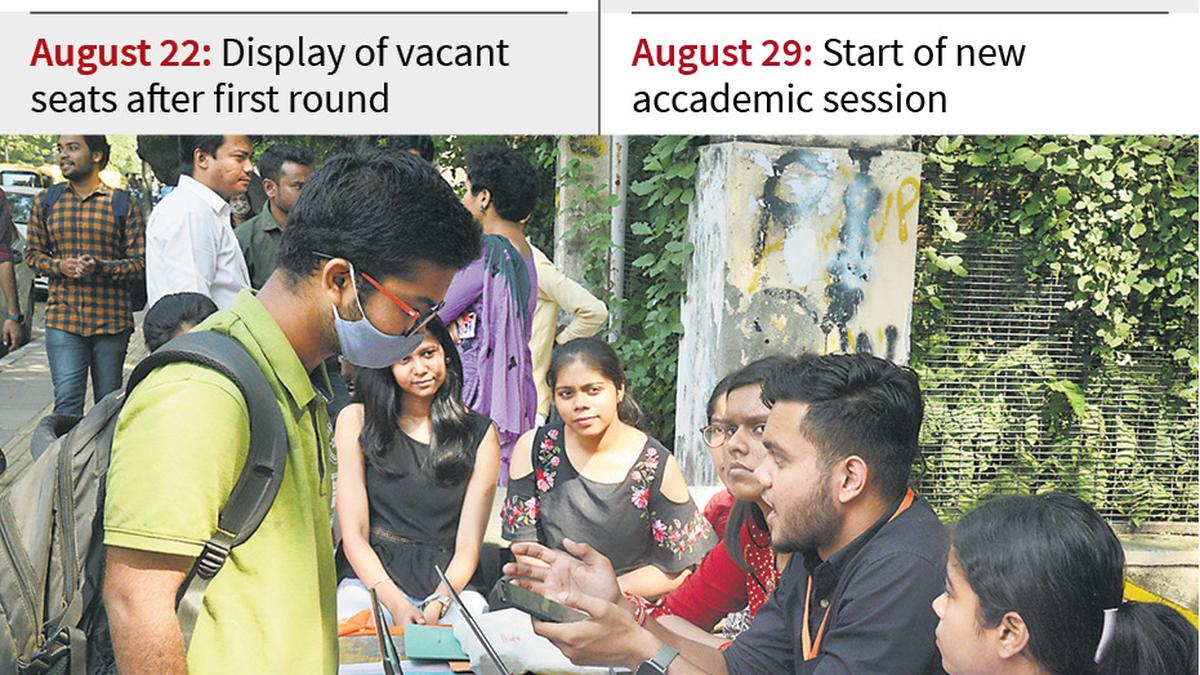Delhi University announced the first allocation list for admissions to its undergraduate programmes under the Common Seat Allocation System (CSAS) on Friday. A total of 97,387 aspirants were allocated programme and college combinations.
Girls (52,838) outnumbered boys (44,549) in the list. Those who made it to the list also included 1,339 single girl children and 243 orphans.
Under its supernumerary quota announced earlier this year, DU has reserved one seat for single girl child in each class across all departments in the university’s colleges. Last year, the university had introduced a supernumerary category to provide admissions to orphan students, a male and a female, in each programme of each college.
DU offers 71,600 undergraduate seats at 69 colleges, departments, and centres for 1,559 programmes.
As per university records, 2,45,287 candidates had applied for the first phase of CSAS, out of which 1,85,543 applicants had completed the preference-filling process.
A parent whose daughter had been anxiously waiting for the list said, “My daughter is happy with her seat in Maitreyi College and will be accepting the allocation. However, she will wait and see if she gets admission to a North Campus college in the next round.”
A DU official said they have made extra allocations to candidates this year in a bid to begin the academic session on schedule — August 29 — given that the admissions have been delayed by a month due to the late declaration of the Common University Entrance Test (CUET) results by the National Testing Agency. This is the third consecutive year that the university is relying on CUET results for admissions.
Extra allocations were made to minimise the number of rounds, said an official.
“There will always be many students who withdraw their application. Hence, we made extra allocations in the first round itself,” the official said.
In a statement, DU said, “This year, the university has added another feature on the dashboard [of the CSAS portal] of all the candidates through which every candidate will be able to see the details of cut-offs and ranks that determine the allocation to a seat as per the category and quota of the candidate.”
An official said, “This was done to ensure transparency as complaints were raised earlier about aspirants not being able to see the last student who was allocated a seat in a particular programme.”
Tiebreaker rules
This year, DU has revised its tiebreaker rules for generating ranks based on which admissions are given. According to the rules, if two or more candidates have the same CUET scores for a programme and college combination, the candidate with a higher percentage of aggregate marks in the best three subjects of Class 12 will be given preference. However, if the students have the same scores in their best of three subjects, the aspirant with the higher aggregate marks in the best of four and then the best of five subjects in Class 12 will be preferred.
“The next criterion will be the candidate’s date of birth. Preference will be given to the student having an earlier date of birth. Lastly, the alphabetical ordering of the names of the candidates will be considered for admission,” said an official.
Next steps
Those who made it to the first allocation will have to accept their seats by Sunday. The first round will conclude on August 21, which is the last date to pay fees. Only candidates who have paid the fees will be eligible to ‘upgrade’ if there are vacancies in the courses which were higher in their preference list.
